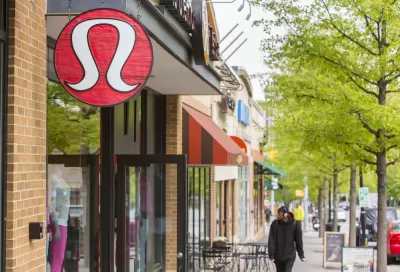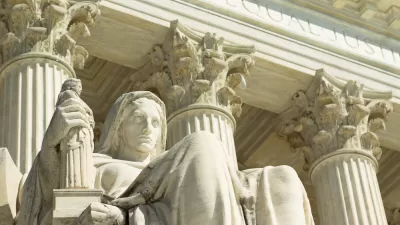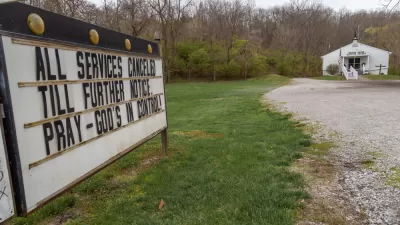Pedestrians in Arlington County, Virginia can be fined for gathering on sidewalks in groups larger than three.

While many cities have expanded the capacity of restaurants and retail businesses to operate in the public realm on sidewalks, streets, and parking spaces, Arlington County, Virginia is trying to limit the size of crowds on sidewalks.
The Arlington County Board recently approved "an emergency ordinance banning groups larger than three from congregating on streets and sidewalks when there are posted restrictions," reports Hannah Schuster. "Pedestrians must stay at least six feet apart in these areas."
"Anyone who violates the rule could face a fine of up to $100, though enforcement will only begin 'after a period of outreach and education,' and after signs explaining the policy are posted," according to Schuster.
The county board approved the new law the same night as social media images revealed large crowds of people gathering on a sidewalk in Clarendon, a wealthy neighborhood in the county, as shared by Tom Lynch, NBC Washington reporter, on Twitter.
This is a look at a sidewalk in Clarendon tonight as the Arlington County Board adopts an order that will prohibit groups of more than three from congregating on streets and sidewalks. Enforcement will start after "outreach and education" per the board's release @nbcwashington pic.twitter.com/qMUkMW4BJC
— Tom Lynch (@TomLynch_) August 1, 2020
The news about the new ordinance banning sidewalk gatherings is embedded about halfway through Schuster's coverage of COVID-19 trends in Washington, D.C., Northern Virginia, and Maryland.
FULL STORY: Coronavirus Update: Maryland Hits Testing Milestone, Arlington Bans Crowds On Sidewalks

Study: Maui’s Plan to Convert Vacation Rentals to Long-Term Housing Could Cause Nearly $1 Billion Economic Loss
The plan would reduce visitor accommodation by 25,% resulting in 1,900 jobs lost.

North Texas Transit Leaders Tout Benefits of TOD for Growing Region
At a summit focused on transit-oriented development, policymakers discussed how North Texas’ expanded light rail system can serve as a tool for economic growth.

Using Old Oil and Gas Wells for Green Energy Storage
Penn State researchers have found that repurposing abandoned oil and gas wells for geothermal-assisted compressed-air energy storage can boost efficiency, reduce environmental risks, and support clean energy and job transitions.

How Madison’s Tree Planting Efforts Are Growing a Healthier Community
Madison’s annual tree planting initiative is enhancing environmental resilience, public health, and community livability by adding 1,400 carefully selected trees citywide, with strong community and institutional support for urban forestry.

Texas State Bills Could Kill Transit Funding in Dallas, Austin
State lawmakers could pull funding from the state’s largest transit agency and the ambitious Project Connect, a voter-approved transit project in Austin.

Opinion: DC Encampment Sweeps Hide, but Don’t Solve, Homelessness
President Trump recently ordered the clearing of encampments built by unhoused people on federal land in Washington, D.C.
Urban Design for Planners 1: Software Tools
This six-course series explores essential urban design concepts using open source software and equips planners with the tools they need to participate fully in the urban design process.
Planning for Universal Design
Learn the tools for implementing Universal Design in planning regulations.
Ascent Environmental
Borough of Carlisle
Institute for Housing and Urban Development Studies (IHS)
City of Grandview
Harvard GSD Executive Education
Toledo-Lucas County Plan Commissions
Salt Lake City
NYU Wagner Graduate School of Public Service





























